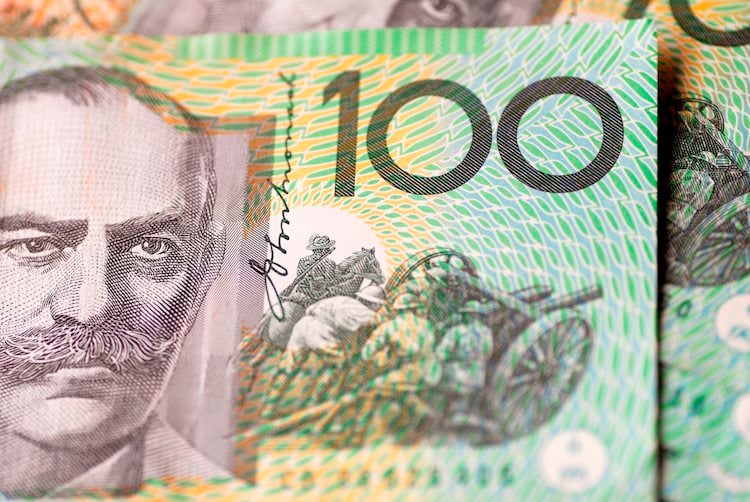- The Australian Dollar gains ground as the RBA is expected to keep higher rates for longer.
- The Australian Dollar may see limited upside due to softer-than-expected inflation data from its trade partner, China.
- The US Dollar remains strong as the Fed is expected to keep rates steady in the range of 5.25%-5.50% on Wednesday.
The Australian Dollar (AUD) edges higher on Wednesday, possibly supported by the hawkish sentiment surrounding the Reserve Bank of Australia (RBA) to maintain higher rates this year. Last week, RBA Governor Michele Bullock indicated that the central bank is prepared to increase interest rates if the Consumer Price Index (CPI) does not return to the target range of 1%-3%, according to NCA NewsWire.
The Australian Dollar may struggle due to softer-than-expected Chinese consumer inflation data released on Wednesday. China’s CPI increased by 0.3% year-over-year in May, missing expectations for a 0.4% rise. Chinese CPI inflation decreased by 0.1% MoM versus April’s 0.1% increase.
The US Dollar (USD) remains strong, bolstered by robust US jobs data for May. This development has reduced the odds of two Federal Reserve (Fed) interest rate cuts in 2024. The CME FedWatch Tool indicates that the likelihood of a Fed rate cut in September by at least 25 basis points has decreased to 52%, down from 67% a week earlier.
Investors adopt caution ahead of the Federal Reserve’s policy decision, and key US inflation data are expected later in the North American session. The Fed is anticipated to keep interest rates steady in the range of 5.25%-5.50% as it aims to curb inflation toward its 2% target. The US headline and core CPI figures for May are estimated to show year-over-year increases of 3.4% and 3.5%, respectively.
Daily Digest Market Movers: Australian Dollar inches higher due to hawkish RBA
- China’s Producer Price Index (PPI) decreased by 1.4% year-over-year in May, compared to the expected decline of 1.5% and April’s 2.5% fall. This marked the 20th consecutive month of contraction in factory-gate prices, but it was the smallest decline since February 2023.
- Australian Treasurer Jim Chalmers stated that the visit of China’s Premier Li Qiang to Australia is an important opportunity. Chalmers noted underlying weaknesses in China’s economy and expressed that he does not expect China’s economy to recover immediately.
- Australia’s NAB Business Confidence index dropped to -3 index points in May, marking the lowest figure in six months and turning negative for the first time since last November. Meanwhile, Business Conditions fell to 6 index points, slightly below the long-run average.
- On Tuesday, National Australia Bank (NAB) Chief Economist Alan Oster commented, “There are warning signs on the outlook for growth but at the same time reasons to be very wary about the inflation outlook, and they expect the RBA to keep rates on hold for some time yet as they navigate through these contrasting risks,” as per the official transcript.
- Rabobank suggested in its report that the Federal Reserve may cut rates in September and December, more likely because of a deteriorating economy than because of progress on inflation. This is because they think that the US economy is entering a stagflationary phase with persistent inflation and an economic slowdown that is likely to end in a mild recession later this year.
Technical Analysis: Australian Dollar moves above 0.6600
The Australian Dollar trades around 0.6610 on Wednesday. Analysis of the daily chart indicates a neutral bias for the AUD/USD pair as it consolidates within the horizontal channel pattern. The 14-day Relative Strength Index (RSI) is positioned slightly below the 50 level. A further movement may suggest a clear directional trend.
Immediate support region is identified around the 50-day Exponential Moving Average (EMA) at 0.6600, which is aligned with the lower boundary of the horizontal channel. A break below the latter could put pressure on the AUD/USD pair, pushing it toward the throwback support at 0.6580.
On the upside, the AUD/USD pair could explore the region around the upper threshold of the horizontal channel around the level of 0.6690, followed by the psychological level of 0.6700 and May’s high of 0.6714.
AUD/USD: Daily Chart
Australian Dollar price today
The table below shows the percentage change of the Australian Dollar (AUD) against listed major currencies today. The Australian Dollar was the strongest against the Japanese Yen.
| USD | EUR | GBP | CAD | AUD | JPY | NZD | CHF | |
| USD | 0.02% | 0.01% | -0.02% | -0.10% | 0.10% | 0.04% | -0.01% | |
| EUR | -0.02% | -0.01% | -0.04% | -0.10% | 0.07% | 0.01% | -0.02% | |
| GBP | -0.01% | 0.01% | -0.03% | -0.09% | 0.09% | 0.03% | -0.01% | |
| CAD | 0.02% | 0.04% | 0.03% | -0.06% | 0.11% | 0.05% | 0.00% | |
| AUD | 0.10% | 0.10% | 0.08% | 0.06% | 0.17% | 0.11% | 0.08% | |
| JPY | -0.10% | -0.08% | -0.08% | -0.11% | -0.18% | -0.06% | -0.09% | |
| NZD | -0.05% | -0.01% | -0.03% | -0.05% | -0.11% | 0.06% | -0.03% | |
| CHF | -0.02% | 0.02% | 0.01% | -0.02% | -0.08% | 0.09% | 0.03% |
The heat map shows percentage changes of major currencies against each other. The base currency is picked from the left column, while the quote currency is picked from the top row. For example, if you pick the Euro from the left column and move along the horizontal line to the Japanese Yen, the percentage change displayed in the box will represent EUR (base)/JPY (quote).













